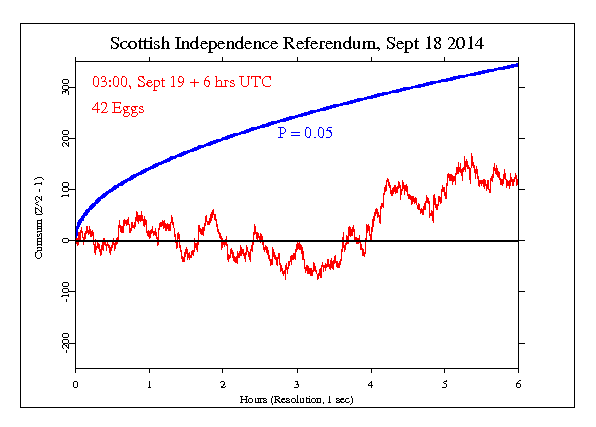Scottish Independence Referendum, Sept 18 2014
Standard analysis
The results of the Scottish independence referendum are in, and the answer is a resounding "no."
The referendum asked only a single question: Should Scotland become an independent country? Scottish voters have decided, by a large margin, that it should not. After all of the ballots were counted, "no" had taken 55.3% of the vote, and "yes" only 44.7%.
Alex Salmond, the First Minister of Scotland and leader of the independence campaign, conceded defeat, and called on "all of Scotland to follow suit in accepting the democratic verdict of the people of Scotland."
Heading into Thursday's vote, the polls had been too close to call. Most suggested a small edge for the "No" campaign, but by narrow enough margins — and with enough questions about whether the surveys were representative — that the world was left in doubt about what the final result would be. Now we know: Scotland will not become independent after all.
Specific hypothesis and results
The GCP hypothesis was set using information provided by Zach Haines, suggested the formal event should start when "it becomes quite apparent that one side is winning - about 03:00 GMT." We use the typical 6 hour period. The result is Chisquare 21703 on 21600 df, for p = 0.309 and Z = 0.500.
Interpretation
The following graph is a visual display of the statistical result. It shows the second-by-second accumulation of small deviations of the data from what's expected. Our prediction is that deviations will tend to be positive, and if this is so, the jagged line will tend to go upward. If the endpoint is positive, this is evidence for the general hypothesis and adds to the bottome line. If the endpoint is outside the smooth curve showing 0.05 probability, the deviation is nominally significant. If the trend of the cumulative deviation is downward, this is evidence against the hypothesis, and is subtracted from the bottom line. For more detail on how to interpret the results, see The science and related pages.

Standard caveat
It is important to keep in mind that we have only a tiny statistical effect, so that it is always hard to distinguish signal from noise. This means that every “success” might be largely driven by chance, and every “null” might include a real signal overwhelmed by noise. In the long run, a real effect can be identified only by patiently accumulating replications of similar analyses.
